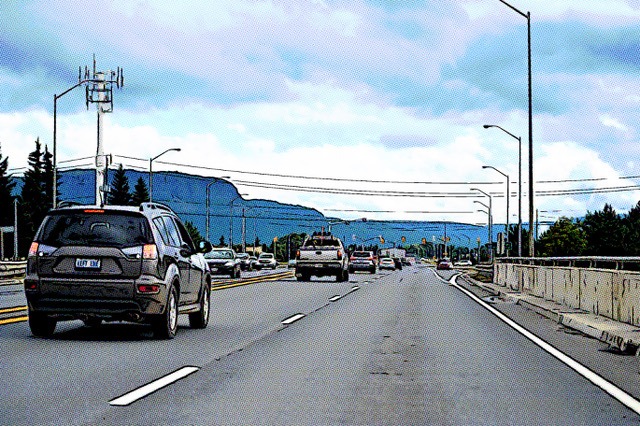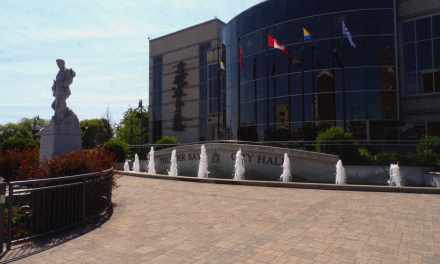Pondering the Bad Habits of Thunder Bay Drivers
Story and Photo by Darren McChristie

It’s big and red and has eight sides. It’s perhaps the most visually distinct sign worldwide; however, it seems to have lost its meaning to some Thunder Bay drivers (I’m looking at you Highway 61 commuters).
I’m referring, of course, to the irresistible rolling stop—a selfish practice that is the visual equivalent to “good enough.” I get it, you’re running a bit late and really need time to allow for the long line at your favourite drive-thru. As you approach the stop sign, you calculate that if you just slow down a little, you can get ahead of the long line of cars and shave 30 seconds on your commute. So, after touching the brake pedal, you hammer hard on the gas and then the problem is all behind you. You don’t even look in your rearview mirror. I know, because at that point I’m so close to you I might as well be in your back seat. It’s a split second decision but like most bad habits, left unabated, makes it even more likely you’ll do it tomorrow. And you will, and so will your neighbour who watched you do it.
This isn’t a local problem. The rolling stop, otherwise known as the California Roll, Chicago Roll, New York Stop, is no more a local problem than the Thunder Bay turn. However, according to a study conducted by InsuranceHotline.com, Thunder Bay driver’s are the seventh worst in the province. This got me thinking: what is at the root of this problem? Is it obliviousness, ignorance, or both?
In an effort to understand Thunder Bay driving habits, let’s consider the dreaded left-lane bandit, best experienced on the expressway. These are the drivers who blissfully stake out the left lane as their only lane of choice, travelling in it as if it were their own, unbeknownst they are disrupting the flow of traffic and leaving a trail of frustration behind them. Section 147 of Ontario’s Highway Traffic Act states that “Any vehicle travelling upon a roadway at less than the normal speed of traffic at that time and place shall, where practicable, be driven in the right-hand lane then available for traffic or as close as practicable to the right hand curb or edge of the roadway.” This newfangled law, which was introduced in 1990, seems foreign to a lot of Thunder Bay drivers. In simple terms, it means slower traffic should stick to the right lane. In a lot of cases, it might be a simple case of ignorance. Plus, there are not many four-lane highways in northern Ontario, so inexperience is a factor (it’s not our fault, the four-laning to Nipigon is taking forever!).
I try not to let road rage get the best of me, but feel there are no solutions to left-lane bandits. I could tailgate and stare intently into their rearview mirror or be patient and take a deep breath. I usually take a good look at the driver to try and make sense of it all—maybe it’s a young driver or a parent with a carload of noisy kids. But, from my experience, the only thing they have in common is that they appear completely oblivious to the fact they are clogging up the fast lane and could be breaking the law. They look happy enough (it’s easy to get lost grooving to Billie Eilish or Willie Nelson) and they also don’t look like they are trying to be anarchists, or seeking a disruption in people’s lives—a simple case of obliviousness. They have a complete lack of situational awareness.
Let’s face it—we all need to get somewhere for a specific time, but your time isn’t any more important than that of the driver in front of you or behind you. I’ve been there, guilty as charged – I occasionally find myself aimlessly on cruise control, in the left lane, distracted by my own thoughts “why don’t they make those “slower traffic keep right” signs larger.”
Stay in the right lane unless you are passing or turning left, and pay attention to the flow of traffic around you. But at the very least, always stop at the white line on the road in front of the large, red sign.














